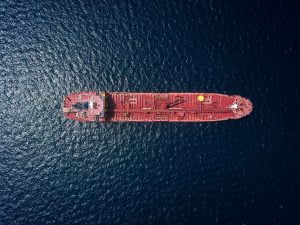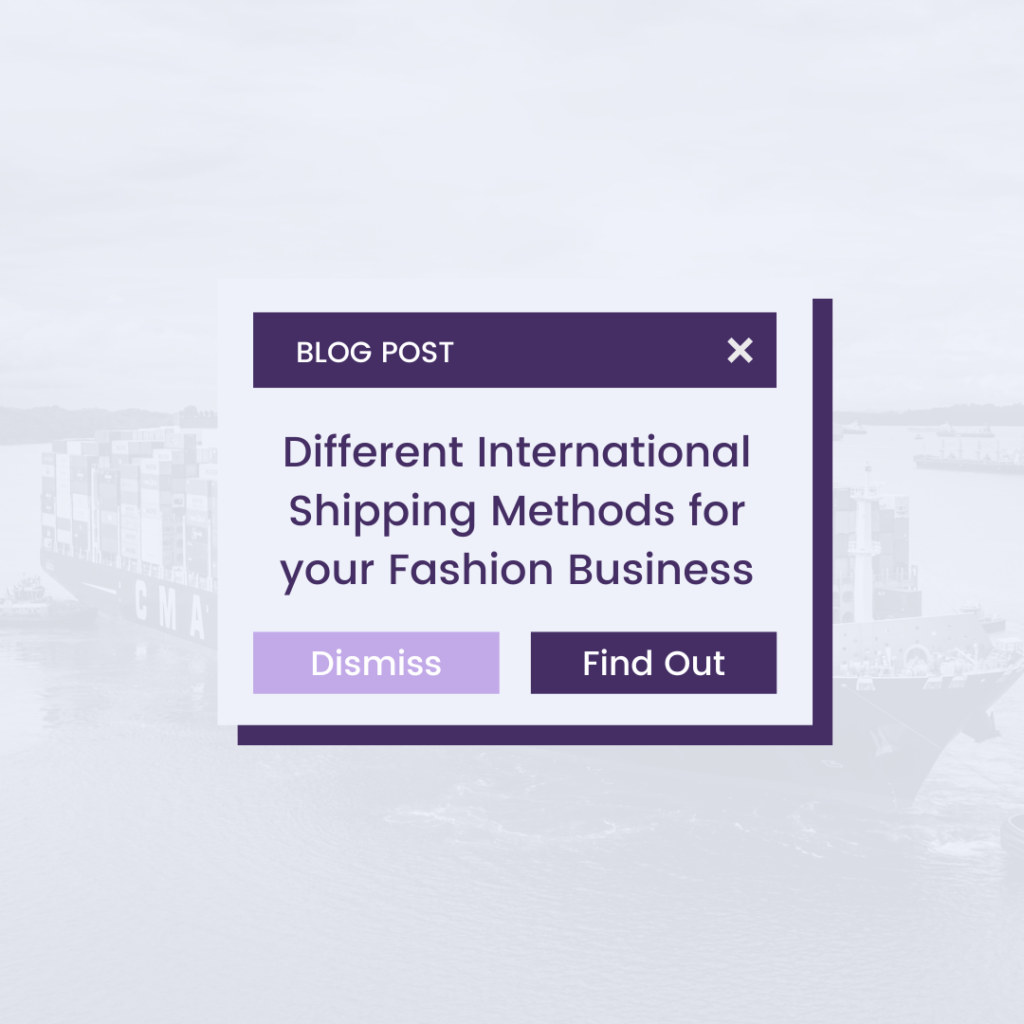You’ve mastered your fashion brands look and feel, created some amazing fashion designs and have sent them off to a garment manufacturer overseas, but it is now time to think about the different international shipping methods and it is also important to know certain abbreviations to communicate effectively with your providers overseas.
In this article, we are going to highlight certain terminologies, as well as tell you the best ways to order your product samples.
You may be thinking to yourself, why is it important to know these shipping abbreviations? Well my friend, if you were to use a wrong term, this could make your first order a huge disaster. You’ll risk being charged unexpected charges which could essentially then ruin any ‘profit’ you’d want to make from your fashion business. Therefore, it is massively important to learn abbreviations such as CNF, CIF, FOB and so on. Knowing the meaning of each one will also help you to better-decide what method is best for your fashion business.
One thing you need to consider when reading this article, is that each shipping method is great and each one also financially depends on what you’re ordering and how much you’re spending. Learning about different international shipping methods can be a grey area, so it is good to do an in-depth research beforehand. In this article, we will go into detail to help you shape your decision for your choice of shipping method; please note that we will be talking about shipping methods when dealing with suppliers from China!
1. FOB
A popular term used in the world of shipping is FOB. This is ‘Free on Board’ or some will say ‘Freight on Board’. This is essentially the ‘default’ pricing used when dealing with suppliers in East Asia. FOB covers the cost of the product, the local exporting fees and customers, and the delivery of your order to the nearest convenient port. Remember, this price will not cover the shipping from China to the UK, as well as the insurance of the shipment and VAT/import duty fees, so make sure you calculate all this on top into your financial plan.
FOB will usually be accompanied by another word, such as FBO Ningbo. Ningbo is a city in China, so when you see a term like ‘FOB Ningbo’, it will mean that this is the place that the supplier will deliver your order to. There are a ton of different ports in China, so it will all depends on the suppliers location, and they will most likely go to the closest port to them. If you need your supplier to send your fashion products to a different port, you are allowed to request this, but this might add to your costings. FOB pricing is used a lot in China, because traditionally, most of the goods were shipped via boat. However, it recent affairs, due to established marketplaces such as eBay and Amazon, the situation has changed as there are so many different alternatives people can use, as people can now also import smaller orders.
On a side note, you need to remember that you may want to use FOB pricing with your supplier, but this will depend on the size and weight of your order. If you were to use sea freight or air freight, then FOB is ideal. However, if your order is a lot smaller, it is probably best to use a delivery service or use EXW instead.

2. EXW
EXW stands for ‘Ex-Works’. It means the cost of the production – so it is fairly simple to get your head around this terminology! No shipping costs, export costs, custom fees and so on are included in this price.
EXW is still a strategy you should consider. You can consider the other pricing terms when using a courier shipping method for your order. When we say ‘courier shipping’ we refer to the faster air courier shipping method, often serviced by companies such as DHL and UPS. Delivery from China using one of these couriers takes around 4-6 working days. The only important thing you need to factor in, is the expense, as the courier shipments are fairly expensive, so they’re better suited for smaller items and are convenient if you have sample orders.
If this is a route you would consider for your fashion business, then it is best to ask your supplier for the EXW price and get them to also give you a quote on the courier shipping, this way, you can work out and manage your finances better. In this case, you need to ensure you have a good and honest connection with your supplier (which Seamless Source will reassure), as some suppliers can overcharge you on the shipping fees. Therefore, to avoid this happening, get quotes from 3 or 4 suppliers and compare them.
A great reason for using EXW and courier shipping, is that you will not have to deal with the local customers clearance procedure. The courier company you choose will send a VAT invoice, import duty and a custom clearance fee through to you in regards to this – so you can be better prepared and having clarity of your costings all the way through!

3. CIF / CNF
CIF stands for ‘Cost, Insurance and Freight’ whereas CNF is similar but it does not include insurance, therefore it stands for ‘Cost and Freight’. For CIF, the price includes sea freight charges and insurance to deliver your fashion products to the nearest port. But after that, it does not cover anything, therefore you will need to find a shipping method from the port.
CNF, as mentioned before, is very similar but it does not have insurance. Your supplier may quote you a CBF Felixstowe price, which means the price should include the shipping on your items through sea freight, to the nearest Felixstowe port. You will then have to organise customs clearance and delivery to the place your fashion products need to be delivered to. You may think that CNF is a great route, and it is, but there are some things you need to consider, such as the fees for the custom clearance, VAT, import duty, docking charge, port security charge and so on. All of these add up, so it’s good to gain clarity of the costings beforehand before you invest into this method.
The CNF method is just a ‘starting point’ for your shipping strategy, there is a lot more you have to cover and sort out after, once it gets to the port. In this case, you may want to use a freight forwarding agent. These companies take care of pretty much the whole process and will deliver your items to the final destinations that they need to be. They will send you an invoice with a list of all the fees, including taxes and custom fees, therefore you’ll have a documentation made for you to reference your costings and manage them effectively. These freight forwarding companies are usually fairly affordable; therefore, this method may appear more appealing to you.
Additional Notes: Remember to ask your freight forwarding agent a quote on the ‘door to door’ price to avoid any financial errors.

4. DDP
DDP stands for ‘delivery duty paid’. This basically means the final price includes everything, from the price of goods, local export costs, shipping to the UK (or another country) and custom clearance fees (such as VAT and import duty). It is a fantastic manageable method but as you can imagine, it comes as a higher price. This method may also seem too good to be true. You need to be made aware that some Chinese suppliers will try and find ‘loopholes’ essentially. They may avoid paying proper import taxes and VAT and attempt to deliver your good without paying the necessary and required taxes. But it isn’t like this all the time, we suggest that you find a company that has good reviews and you’ve researched it well. Be precautious before you invest into this method- if you research the company well beforehand, you will be fine.
As you can see, you are spoilt for choice in terms of international shipping methods. Therefore, your next step would be to analyse each method and contact your suppliers for quotes so that you can figure out what method is best for your fashion business, and remember to think of your time scale too! To summarise; if you’re intending to use a sea freight method then request an FOB price, after you receive this, you can contact your freight forwarder for a quote. Remember to think about insurance too, as you want to protect your products against damage.
On the flip side, if you are ordering a very small quantity, work with an EXW price and find a suitable courier to you. And you can also look at your other options like CIF / CNF, DDP- what method you choose to proceed with well and truly depends on your financial flexibility and timescale you have planned.
For more Seamless Source blogs click here.




